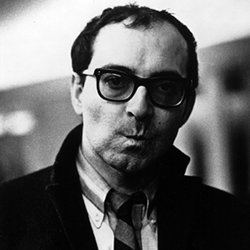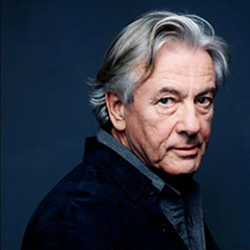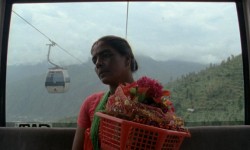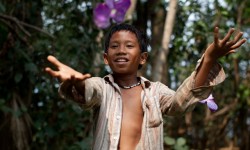
Review: Busong (2011)
Busong is one of the few films that break out from the line up of Cinemalaya Independent Film Festival 2011. With a non-linear narrative structure and a catchy stylistic heterogeneity, it transcends from the dominant themes of Philippine cinema placing itself as one of the most important local films about tribal culture. What permeates within the juxtapositions of images and associational elements in the film is this pervading concept of tribal space and time.
Solito’s personal reflections on Palawan’s history has assimilated within the aesthetics of his film. He uses it to construct the film’s unique spatial and temporal unity of Palawan’s struggles to reclaim their degrading landscape and to revoke the lost spiritual identity of the region after years of captivity from foreign forces. This pluralistic and personal approach of creating a filmic world is itself a creative achievement in contemporary Philippine cinema. It resurfaces the rarely explored linkage of cinema and tribal history told through a personalize spatio-temporal design. Solito adapts the non-linearity of the oral tradition his of tribal ancestors to his film by fusing it to its editing. He places great importance on this constructional principle that with this, the film can be situated within the discourse of the loob-labas (internal-exteral) system, one of the central discourse in Filipino Psychology, indigenous to the Filipino self.
The film itself is a journey from outside to the inside, from labas to loob. Angkarang carries the badly wounded Punay in a hammock from the outskirts of the beaches of Palawan to its inner mountains in search for a healer of Punay’s wounds. This mystical search for the healer drives the narrative of the film. In their journey, they met three locals: Ninita, a woman troubled by her husband ailment from an accident after an Amingus tree fell down on him; a fisherman troubled by the loss of his son after an encounter with an abusive foreigner who claims he owns the island; and Aris, a returning local from the city in search for his roots to fulfill his ancestors’ wish to become a shaman. The journey narrates the process of healing of Palawan’s destroyed rainforests from environmental degradation in a metaphorical sense. This process is from the outside to the inside.
The foliage of the leaves and the mystical sounds of the forest mimics the internal self of the character, Punay, and her mysterious and elusive role as Palawan herself. The depth of her wounds on her feet and on her skin scarred not only her physicality as a being but also her internal consciousness. As the first healer, a friend of Ninita who also tried to heal her husband, fails to heal Punay, the fisherman acts as a precursor, linking the first healer to the final healer, Aris. In Ninita’s story of the fate of her husband Tony, the manifestation of the ‘dark force’ responsible for the metaphorical wounds of Punay appeared covertly via the juxtaposition of chainsaw to Tony’s body during his healing with the first healer. It is with the fisherman that the ‘dark force’ appeared in a full physical form via the foreigner threatening the fisherman and his son to leave the island. These covert and overt display of opposing forces provide a sharp critique to the locals who continuously destroy the forest of Palawan and to the US’s responsibility in the territorial struggle with the local people, and also the hypocrisy of those local guardians who follow the US in abusing Palawan’s tribal riches.
The interaction between the physicality and non-physicality of nature in Busong acts as a building force at the end of the film. As the film reaches its climax, symbols became intensified and superimposed. The film ends with Punay successfully healed with butterflies emerging from the surface of her wounds. The symbolism becomes apparent: rebirth from within oneself.
Within the eternal verite of Busong a message purports to tell that: situated inside the forces of nature lies this naturalistic, non-physical force, busong (literally means karma), that can destroy those who ills Palawan’s riches or re-create effortlessly Palawan’s beauty. This dualistic nature of busong haunts the film with a self-reflexive force as the film mirrors to our lives this indigenous and personal relationship to the environment.























